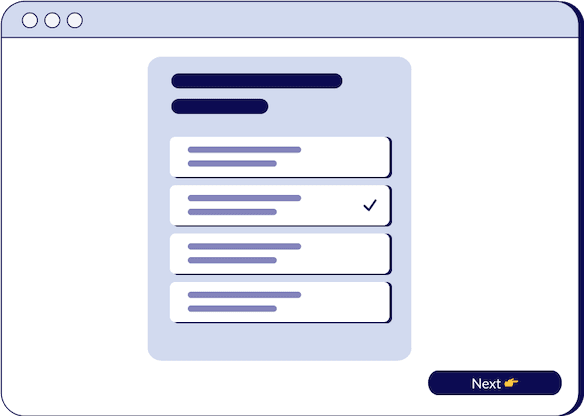
Analyze Your Competitor's Marketing Strategy
Julie Fjeldgaart
Manager of Services

- duration
- 14 min
- Average Score
- 90%
- Stars
- 5
In the ever-evolving landscape of digital marketing, staying ahead of your competitors is no longer an insurmountable challenge. Gone are the days when peering into a competitor's marketing strategy required insider information. Today, you have an array of competitive analysis tools at your disposal, such as Ahrefs, SEMRush, and SimilarWeb, that can unveil every facet of your competitors' tactics. In this insightful session, Julie from Sleeknote, the go-to platform for e-commerce marketers seeking more engagement and higher conversions, will guide you through the essential steps of conducting a marketing competitive analysis.
Step 1: Identifying Your Competitors
Before delving into the nitty-gritty of competitive analysis, you must first identify who your competitors are. These are the companies directly vying for your target audience's attention. Conducting this initial search is often as simple as typing one of your core keywords into Google's search bar. Let's take an example: Imagine you run a SaaS business specializing in billing and invoicing software for freelancers. A quick search for "invoicing software" on Google reveals a list of direct competitors. However, don't stop there; refine your search with modifiers to discover competitors that might not appear in your initial query.
Step 2: Understanding Organic Competitors
Your next focus should be on organic competitors, those websites competing with you for keywords. If content marketing is a vital acquisition channel for your business, understanding your organic competitors becomes crucial. Create a spreadsheet to track the websites you plan to monitor, and use tools like Ahrefs or SEMRush to gather metrics such as the number of referring domains and organic search traffic. Airtable, with its versatile data viewing options, is an excellent tool for this purpose.
Step 3: Analyzing Competitors' Keywords
Keywords are the backbone of online visibility, and understanding what your competitors are targeting is paramount. Learn from their successes by identifying high-volume keywords that align with your content strategy. By analyzing their keyword choices, you can enhance your content marketing efforts and avoid reinventing the wheel.
Step 4: Capitalizing on Paid Keywords
Paid keywords can offer deeper insights into your competitors' acquisition strategies. Investigate their paid keywords using Ahrefs to uncover valuable opportunities. If a competitor is investing in certain keywords, it's likely because they hold significant search volume and traffic potential. Consider crafting content around these keywords to strengthen your position.
Step 5: Decoding Link Building Strategies
Link building is more crucial than ever in a saturated digital landscape. To outperform your competitors, analyze their backlink profiles to understand their growth strategies. Whether they rely on content-driven link building or traditional PR, identifying their approach can provide valuable insights into their marketing tactics.
Step 6: Reverse-Engineering Email Campaigns
Email marketing can reveal a great deal about your competitors' goals and customer engagement strategies. Collect competitor emails using a dedicated account and labels in Gmail. Evaluate their email frequency, types of emails sent, subject lines, and CTAs to gain a comprehensive understanding of their email marketing strategy.
Step 7: Uncovering Remarketing Strategies
Remarketing is a potent strategy for re-engaging with your website visitors. While analyzing a competitor's remarketing campaigns isn't straightforward, it's possible. Visit their site and observe your social media feeds for retargeting ads. Take screenshots and note where they direct users, providing insight into their targeting and goals.
Conducting a competitor analysis is a proven path to business growth, but remember, it's a starting point. To truly excel, aim not to be the best but the only. As Srini Rao wisely advises, "Don't be the best, be the only."
Ready to dive deeper into competitive analysis? Watch this session to learn more about each step and discover actionable strategies that can set you apart from the competition.
How Triple Session works
Training, Testing, & Feedback
Triple Session's proven formula accelerates your sales performance through consistent, organized practice, backed by measurable results.

Bite-Sized Knowledge
Our expert-led video sessions simplify complex sales concepts into easy-to-digest 5-15 minute videos for better retention.

Test Your Understanding
After each session, there will be a quiz to test your understanding and help you improve on any areas that need more attention.

Evaluate and Grow
Get progress snapshots after each quiz to track your improvements and achieve your sales mastery goals.